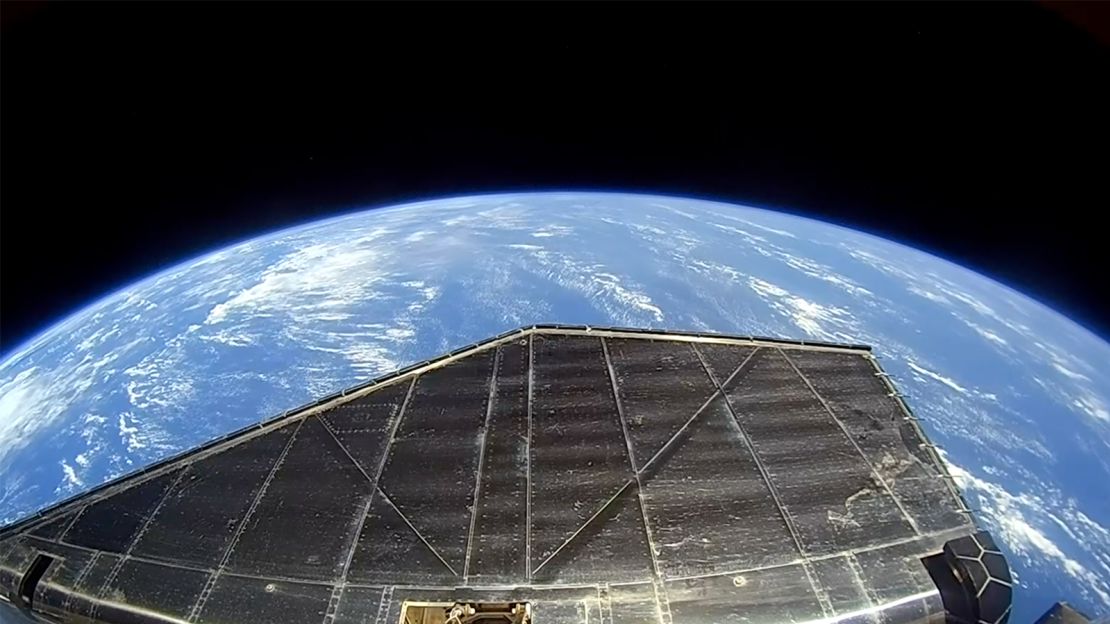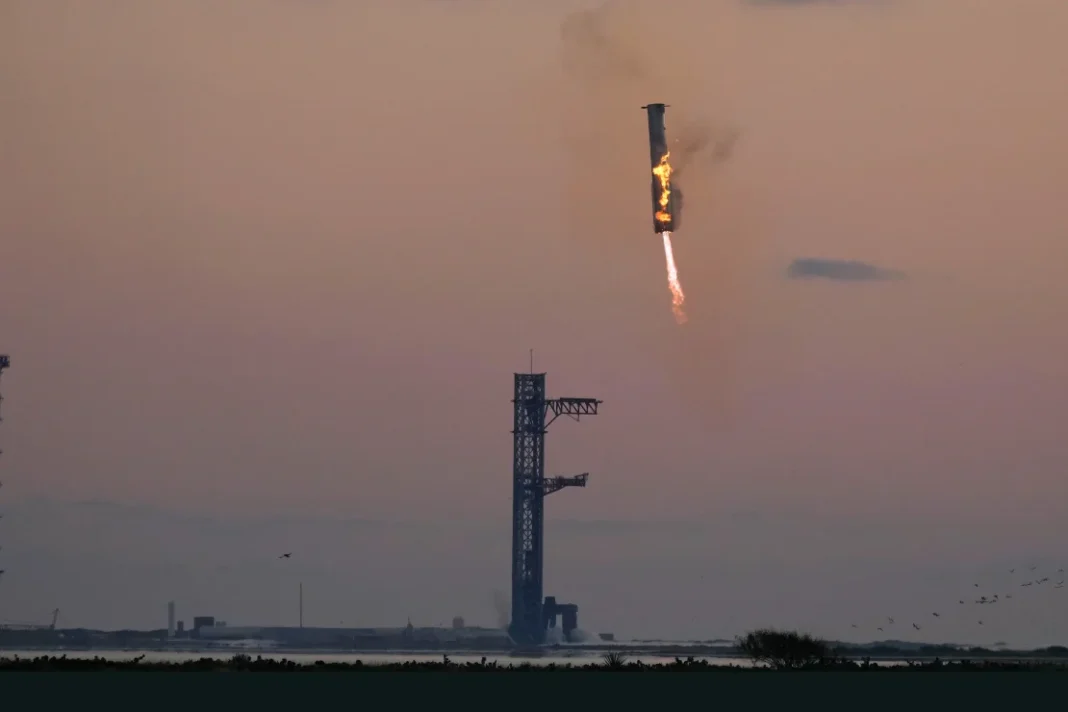SpaceX successfully conducted a test flight of Starship, the world’s most powerful rocket system, early Sunday morning, a significant step toward future crewed missions to the Moon and Mars.
The Super Heavy rocket booster, carrying the uncrewed Starship spacecraft, lifted off at 8:25 a.m. ET (7:25 a.m. CT) from the Starbase facility in Boca Chica, Texas, within a 30-minute launch window. This demonstration marked the first attempt to recover the 71-meter (232-foot) booster midair using SpaceX’s specially designed capture system. After detaching from Starship, the booster was successfully caught by massive metal arms, nicknamed “chopsticks,” integrated into a tower called Mechazilla.
Meanwhile, the Starship spacecraft continued using its six engines to perform a landing rehearsal over the Indian Ocean, though SpaceX did not plan to recover it. Each of these tests aims to refine the company’s ability to recover and reuse both the Super Heavy booster and Starship spacecraft for future missions. Rapid reusability is key to SpaceX’s strategy to lower costs and speed up missions to Earth’s orbit and beyond.
Future Missions and Ambitious Goals
SpaceX plans to use Starship as a key part of NASA’s Artemis III mission, which aims to return astronauts to the lunar surface by 2026. The company has secured government contracts worth nearly $4 billion for these efforts. Eventually, SpaceX hopes to use Starship to achieve its long-term goal: transporting humans to Mars.
A History of Testing and Learning from Failure
Since 2019, Starship’s development has involved progressively more complex test flights, starting with short “hop” tests using a prototype called Starhopper. The first integrated flight of the Starship spacecraft and Super Heavy booster took place in April 2023, though it ended with an explosion over the Gulf of Mexico. SpaceX embraces such setbacks, viewing them as opportunities for rapid improvement.
The most recent test, conducted in June, saw both the booster and spacecraft survive reentry and perform landing maneuvers over the ocean, marking significant progress. However, the mission exposed issues with Starship’s heat shield, leading to melted flaps that hindered control during landing. In response, SpaceX technicians spent over 12,000 hours upgrading the thermal protection system with new-generation tiles and improved flap insulation.

Recovery with Mechazilla
A major advancement in Sunday’s mission was the successful recovery of the Super Heavy booster. SpaceX, having mastered booster landings with the smaller Falcon 9 rockets, is applying similar principles to the far more powerful Super Heavy. Instead of using landing legs, the company designed Mechazilla to catch the booster midair, reducing turnaround time for reuse. CEO Elon Musk envisions a future where rockets are re-fueled and relaunched within 30 minutes of landing.
While the capture process is still being refined, Musk noted in a recent interview that the latest flight had a “decent chance of success” and emphasized that these efforts are not breaking any physical limits. The midair catch occurred about seven minutes after liftoff, while the Starship spacecraft remained in flight for nearly an hour before a controlled splashdown in the Indian Ocean.
Overcoming Challenges for the Artemis Program
NASA has warned that any delays in Starship’s development could impact the timeline for Artemis III, which aims to put humans on the Moon for the first time in over 50 years. A key challenge ahead is demonstrating in-orbit refueling, essential to providing Starship with the propellant needed for deep-space missions.
With each successful test, SpaceX moves closer to realizing its vision of making space travel more efficient and affordable, potentially transforming human exploration beyond Earth.



